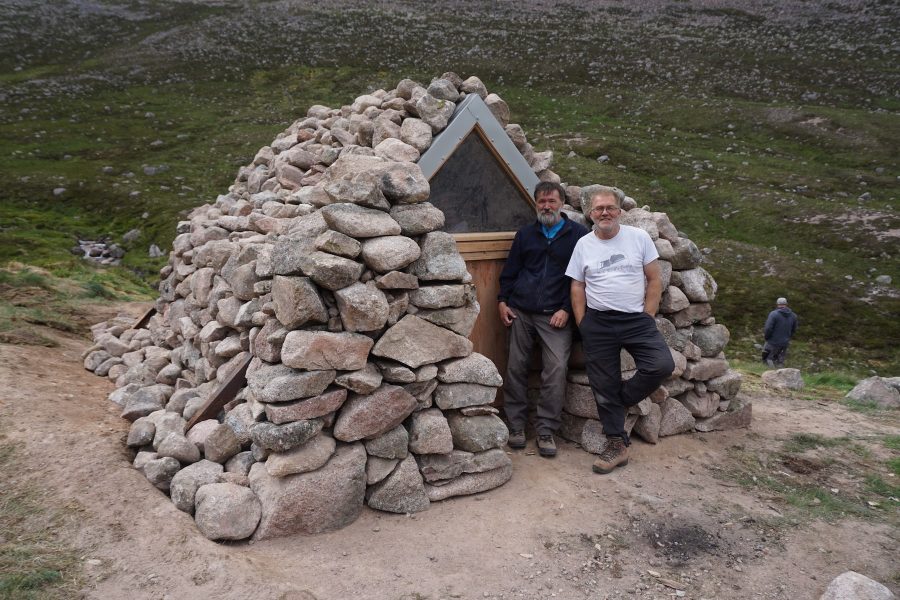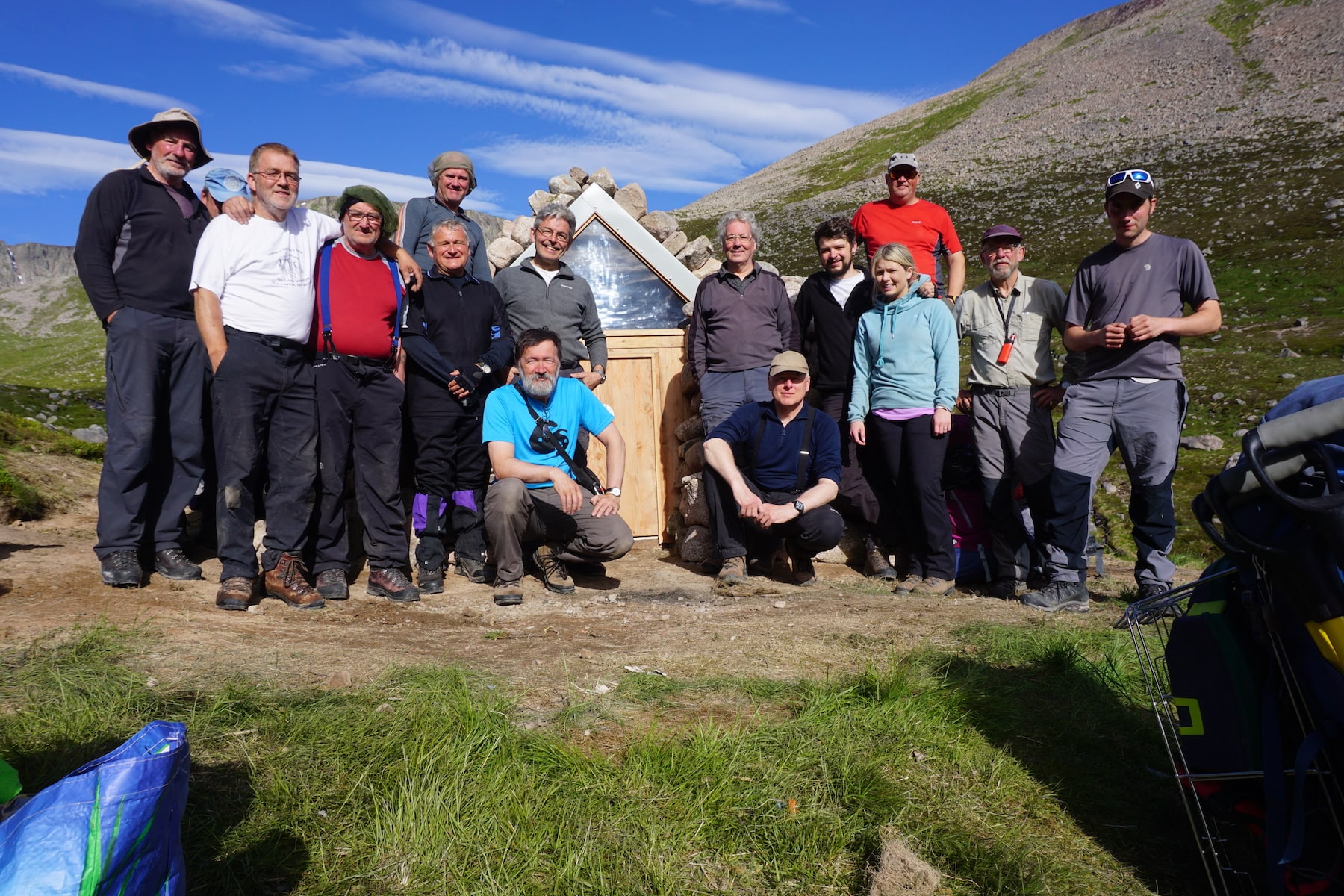An historic mountain refuge has been restored by volunteers from the Mountain Bothies Association
The Garbh Choire Refuge (GR: NN959986) is situated in one of the more remote climbing areas in the Cairngorms. Although usage has been light compared to other shelters in the area, it has played a significant role in the development of both rock and ice climbing in the area and is an important part of Cairngorm mountaineering heritage. It was originally built by Aberdeen University Lairig Club approximately 50 years ago.
The refuge, built with a stone covering over a steel frame, was in a poor state of repair and without attention would almost certainly have been lost. Local walkers and climbers mounted a campaign to retain it as a shelter, for heritage reasons, but also because it could potentially save lives in an emergency.
The building’s owner, the National Trust for Scotland (Mar Lodge Estate), agreed that the MBA should assume responsibility for its ongoing maintenance. Since receiving the go-ahead from the Trust, a huge amount of effort has been put in to prepare for the main work party, which took place on the weekend of 22/23 June. The original structure has been retained with new steel work replacing parts of the original framework.

Exterior shot of the old refuge, just last October. The stone shell is packed with multi-coloured polythene patches (all useless) and the door is off its hinges. © Neil Reid
The restoration concludes many years of campaigning by local activists and months of preparation and hard work by MBA volunteers.
Please note that the building will continue to be used as an emergency shelter only. It is not intended for planned overnight stays.
Interview with Neil Reid, Garbh Choire renovation campaigner
The Great Outdoors got in touch with Neil Reid, who is Communications Officer for Mountaineering Scotland as well as being closely involved with the maintenance of bothies in the Cairngorms. Neil was instrumental in campaigning for the refuge to be rebuilt. He blogs at Cairngorm Wanderer.
How many people took part in the work party, and what did the work involve?
“So many people were involved behind the scenes that it’s hard to get a true figure, but there were about 25 present over the three days. This doesn’t take into account people who made several trips to the refuge ahead of the work party to strip out the old building and check the condition of the steel frame, nor the time spent designing and making the replacement steel beam and the additional support beams.
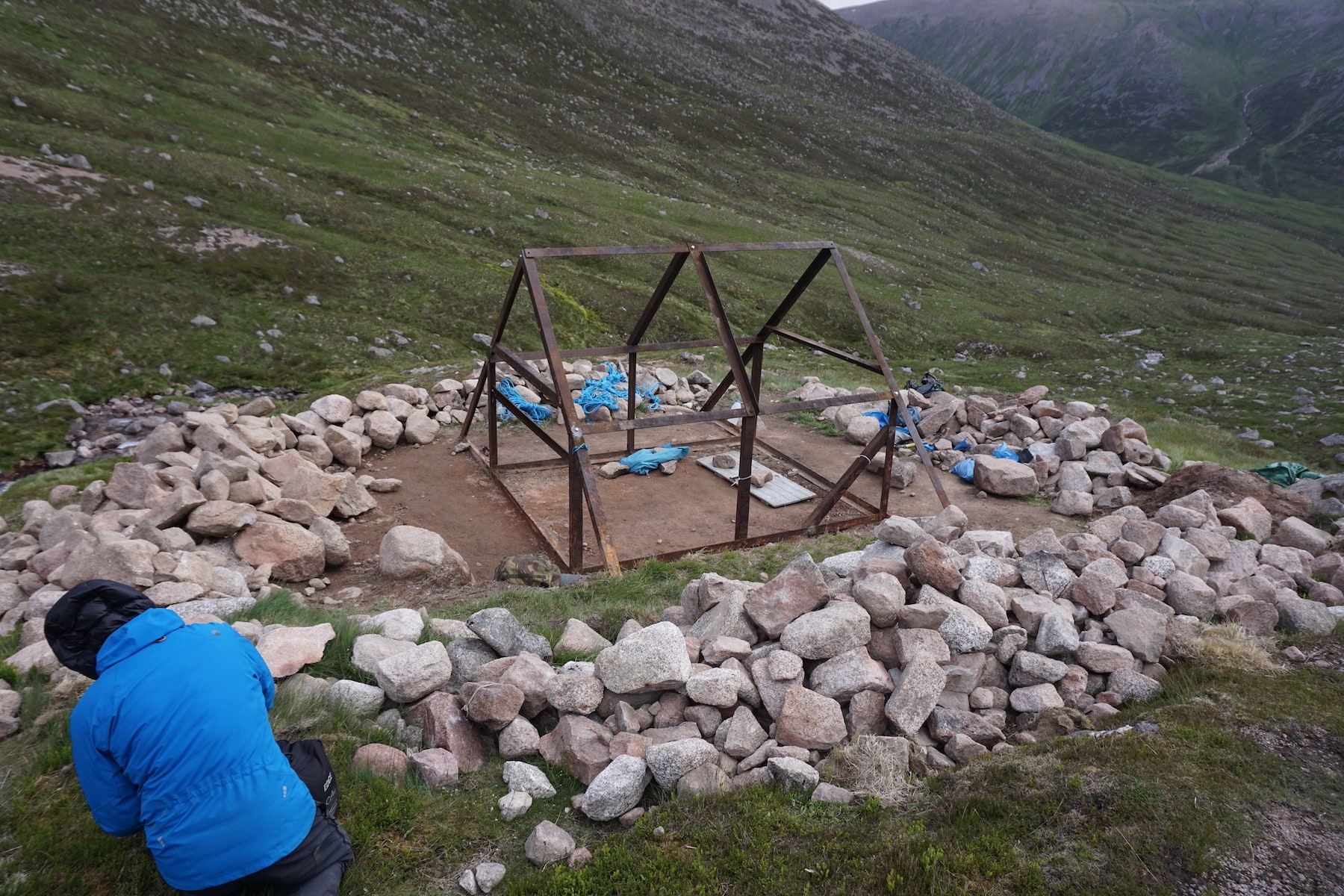
Stripped back. All the stones and coverings removed, all that remains of the old Garbh Coire Refuge is the steel frame. © Neil Reid
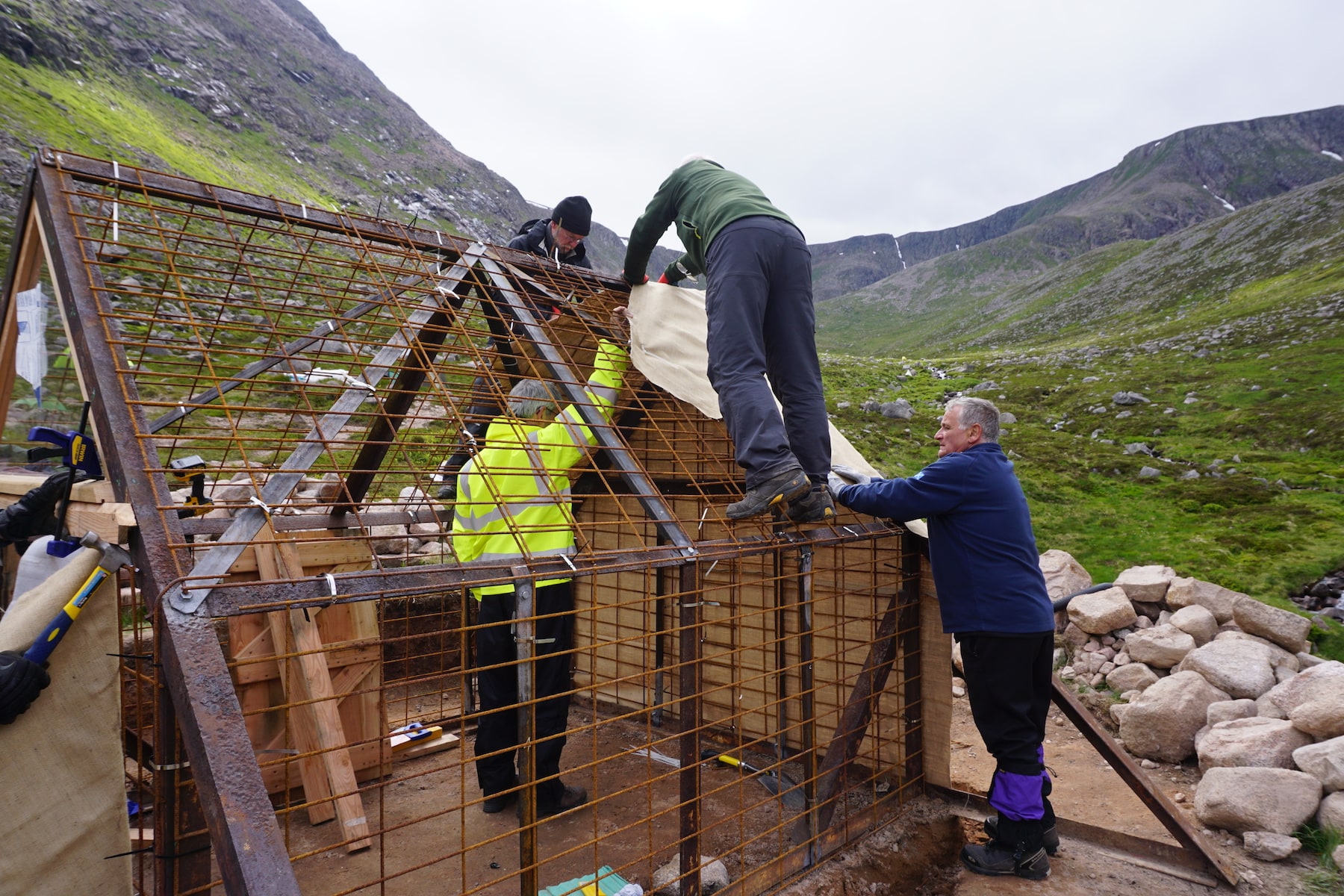
Rebar steel grid and additional steelwork was attached to the metal frame to support the stone shell. © Neil Reid
“Project manager Kenny Freeman also prefabbed the window above the front door and a section of the front wall, and he used the wood for the flooring to make up the pallets to carry the stuff in under the helicopter, to minimise the waste to carry out.
“Everything was flown to the site along with a good number of the volunteers. Once everything was unpacked the steel frame was fixed and strengthened. A shallow field drain was dug around the base of the frame to take water away from the building. Several layers were laid over the frame: hessian, geotex fleece, butyl pond liner, and finally more fleece to protect the butyl from the outer layer of stones.
“Inside, people were working to clear the floor area, lay a damp-proof membrane and wooden joists, then put in the wooden floor. The doorframe was installed and a sturdy wooden door put in, with a large Perspex window above.
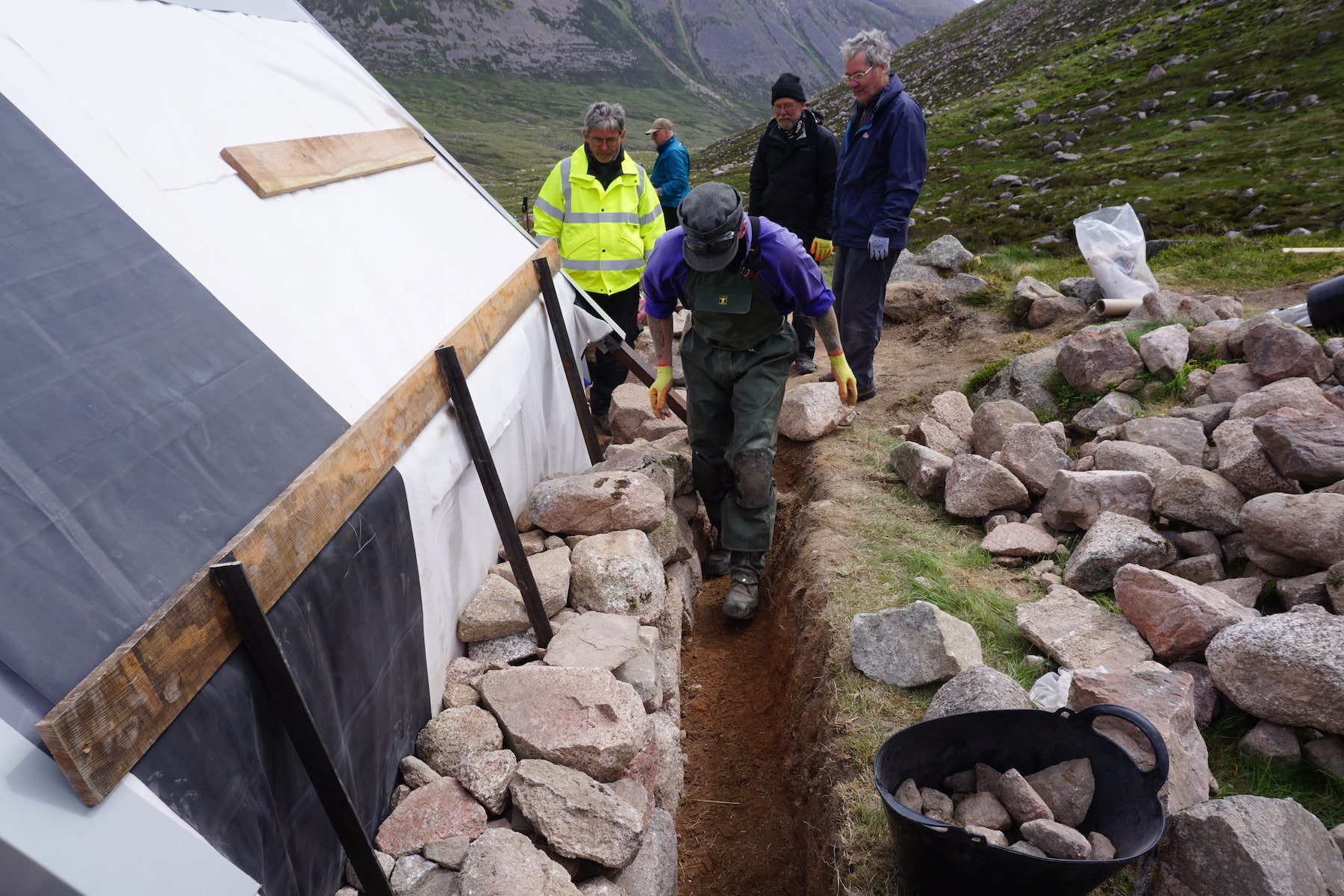
On Saturday the stone walls started to go up. Surprisingly quickly the walls rose. Apprentice stoneworkers included Mountaineering Scotland’s Heather Morning. © Neil Reid
“On the Saturday, under the direction of a professional drystone waller, we rebuilt the stone shell. Instead of just piling stones around and over the structure, the sides were built like proper drystone walls. Only the thinner layer of rocks covering the roof is actually supported by the frame.
“Then on Sunday all the tools, unused materials and waste produced during the work party (debris and rubbish from the old building had been removed by helicopter on the first day) were packaged up, and added to everyone’s already heavy loads for the long and arduous walk out in hot sunshine.”
Why do you think there has been such interest in the renovation of the refuge from the hillwalking community?
“Right from the word go, when I started campaigning for this, I was amazed by the level of support from organisations, clubs and individuals. I think there is a real sense of community about the Cairngorm bothies (and refuges and howffs) and people are proud of what they have. Garbh Choire is one of the smallest, but is perhaps seen as a brave outpost in the wilderness. It’s been associated with several rescues over the years and many tales of survival in wild conditions, as well as being used as a rendezvous and helicopter pick-up point for MRTs involved in arduous searches and rescues. [Editor: read our feature on Memories of Garbh Choire, published February 2018.]
“It’s not one of the best used, nor handily placed on a through route, like Corrour or Scottie’s or the Hutchie, but people have a great fondness for it and so many people wanted to be involved in the rebuild that we were virtually turning people away.”
Any final remarks on the unique role of this shelter and your hopes for its future?
“To be honest, I hope people mostly forget about it. From a conservation point of view Mar Lodge Estate don’t want it to become a popular destination, and insisted that it remain a Spartan place of refuge rather than of resort – and I understand that. But my reasons are perhaps more selfish: I like the idea of it being a seldom-visited outpost just inside one of our greatest and wildest mountain corries, a place of refuge where you can take cover when the weather starts throwing everything at you in a place where any other shelter is hours away, a pilgrim’s cell where you can regroup before venturing into the heart of the mountain.
“But I’m getting far too romantic about this. What I hope is that people treat it and the area around with respect and leave no litter. That would do.”
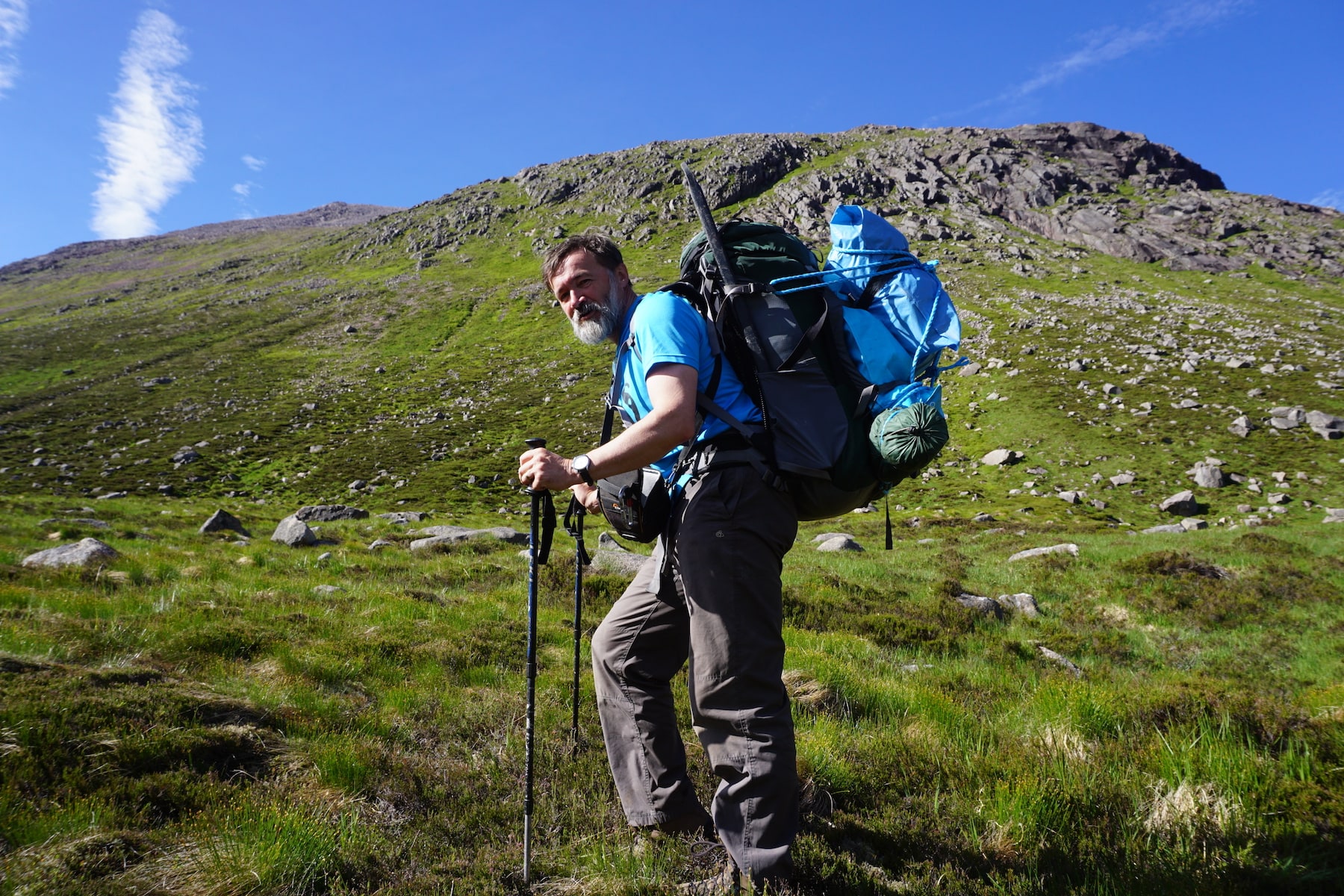
Neil Reid on the way out, complete with personal kit (far too much!), rubbish sack, catering materials and a rather heavy crowbar. Everyone had similar loads on what turned out to be the hottest day of the year so far. © Neil Reid
All images reproduced by kind permission of Neil Reid and the Mountain Bothies Association.
mountainbothies.org.uk

